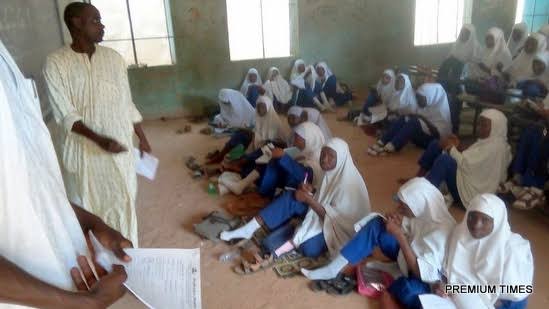By Ngozi Nwankwo
Finally, girls education has received a boost in six northern states of Nigeria, including Sokoto and Zamfara where girls enrolment in Girls Education Programme 3, GEP3 hits 44percent and 62percent respectively since 2012.
The United Nations Children’s Fund, UNICEF, Chief of Field Office, Dr. Maryam Darwesh Said who made this disclosure at Sokoto and Zamfara States 3 days Media Dialogue on Girls’ Education Programme said that in Sokoto state a total of 418,614 girls (44%) were enrolled since 2012 in GEP3 supported schools, while in Zamfara the girls enrolled were 545,711 (62%).
Funded by the Foreign,Commonwealth and Development Office, FCDO, of the United Kingdom and supported by UNICEF, GEP3 is aimed at improving social and economic opportunity for girls by getting school age girls who are out of school enrolled in school. UNICEF, which provides technical support, has a target of enrolling one million girls to school in order to complete their basic education and acquire skills for life and livelihoods( enrolment, completion and learning), as well as improve capacity building for teachers to deliver learning for girls.
Speaking further, Said disclosed that, since the introduction of the GEP3 since 2012, FCDO has at least, donated about $109,196, 039.80 to support girls education in the six Northern states in Nigeria.
The six states that are benefiting from the GEP3 supported schools, according to Said include Bauchi, Katsina, Niger, Sokoto, Zamfara and Kano.
Explaining further on the progress recorded in Sokoto and Zamfara states, the UNICEF Sokoto Chief Field Office said in Sokoto 5,943 had their capacity built through the project, adding that 486 were female teachers.
In Zamfara, according to her,the number of teachers whose capacity and skills were enhanced through GEP3 were 5,650 of which 295 are females.
In Sokoto 880 (53 females) Integrated Quranic Schools (IQS) facilitators were trained, while in Zamfara the number is 400 (39 female.
“To support efficient and effective governance in Primary Schools and Integrated Qur’anic schools, 13,094 management committee members (of which 5,353 are women) underwent relevant capacity development trainings in Sokoto and Zamfara.
“These are only a few examples of how GEP3 has contributed to maximise the benefit that young girls and boys can reap from the education system in their path towards mastering foundational literacy and numeracy skills,” she said.
While stressing on the need to improve investment on education in Nigeria, Said, also called on the states to ensure full implementation of the sustainability GEP3 plan.
“I urge you to take the opportunity of the soon to start 2023 budgeting process to capture the required state funding contributions for UNICEF supported interventions and to provide strategic state resources for the sustainability to all gains obtained so far in the education sector from GEP3 and by and large from the partnership with UNICEF,” she said.
While delivering her presentation on ‘ Why educating girls is important’, Education Manager, UNICEF Field Office, Sokoto, Miriam Mareso said limited educational opportunities for girls,and barriers to completing 1+ 12years of education cost countries between US$15 trillion and $30 trillion in lost lifetime productivity and earnings, saying that addressing all these factors could help
lift households, communities, and countries out of poverty.
She quoted the Multiple Indicator Cluster Survey, MICS, 2017 and
Demographic Health Survey,DHS, 2018 as saying, ” A poor girl born in northern Nigeria faces daunting challenges throughout her life. She has a 55% chance of being stunted in early childhood and more than a 10% chance of dying, mainly from preventable disease before she reaches the age of five.
If she survives to her school-age years, she will have, on average, less than a 50% chance of enrolling in primary school and less than a 30% chance of transiting to secondary school if the girl comes from a rural community or from a poor household, she is doubly disadvantaged. A girl from the poorest wealth quintile has a 24% chance of enrolling in primary school and only a 9% chance of enrolling in secondary compared to an 87% chance and 79%
chance, respectively, for girls in the South-South region.”
On GEP3, Mareso expressed joy that over 1.3 million girls have been enrolled in primary and Integrated Quranic Schools,IQS, which according to her, exceeded the targeted 1million girls in the six states since 2012.
Also, the Executive Chairman Sokoto SUBEB, Rt. Hon Altine Shehu kajiji appreciated FCDO, UNICEF for the support so far, saying that the important of educating girls cannot be overemphasised as it brings changes and provides a better society.
According to Kajiji, a family that raises a girl child will tend to be self- reliance.
He pledged Sokoto government’s continued commitment to improve girls enrolment and full implementation of GEP3 Sustainability plan.







